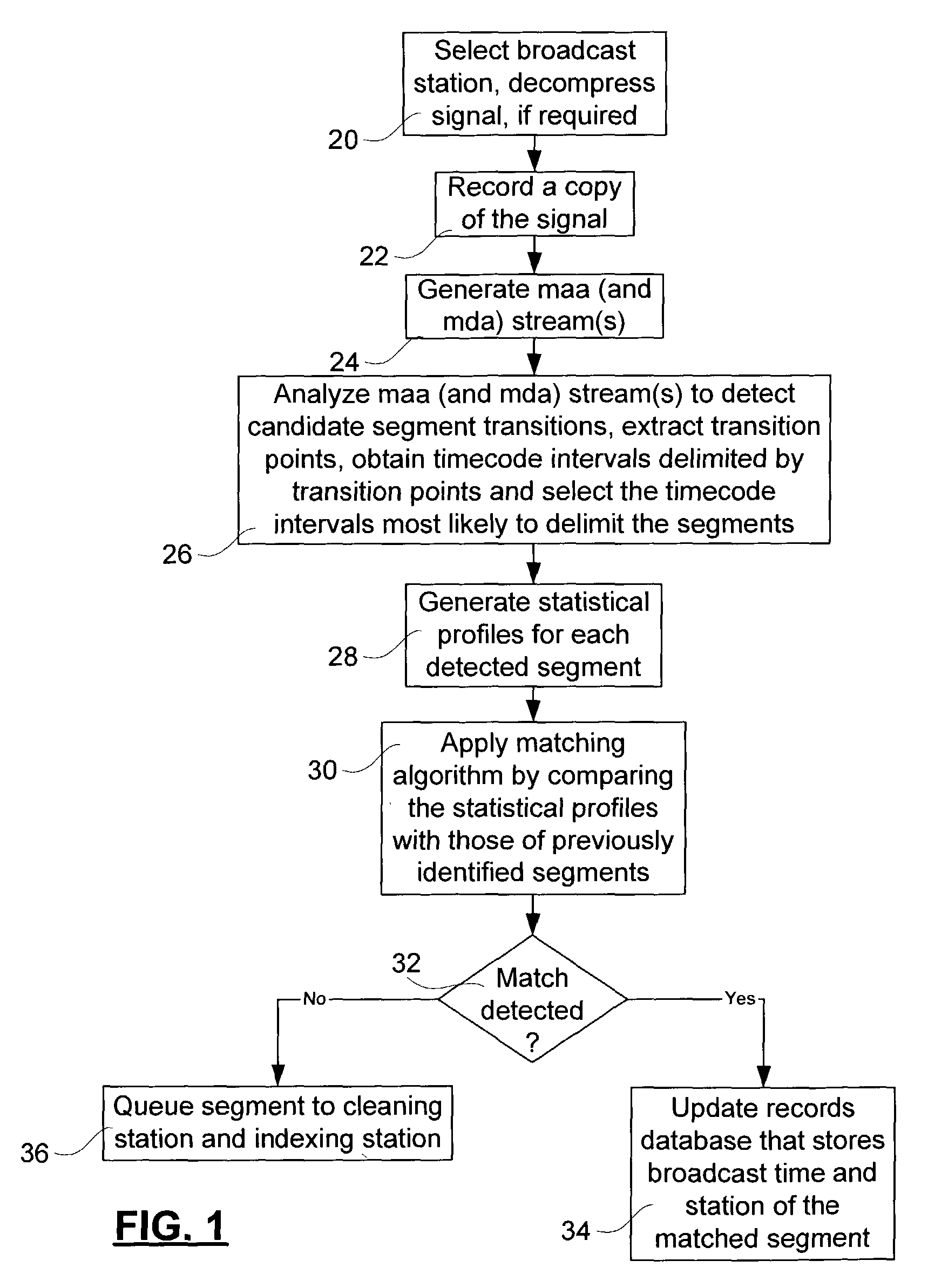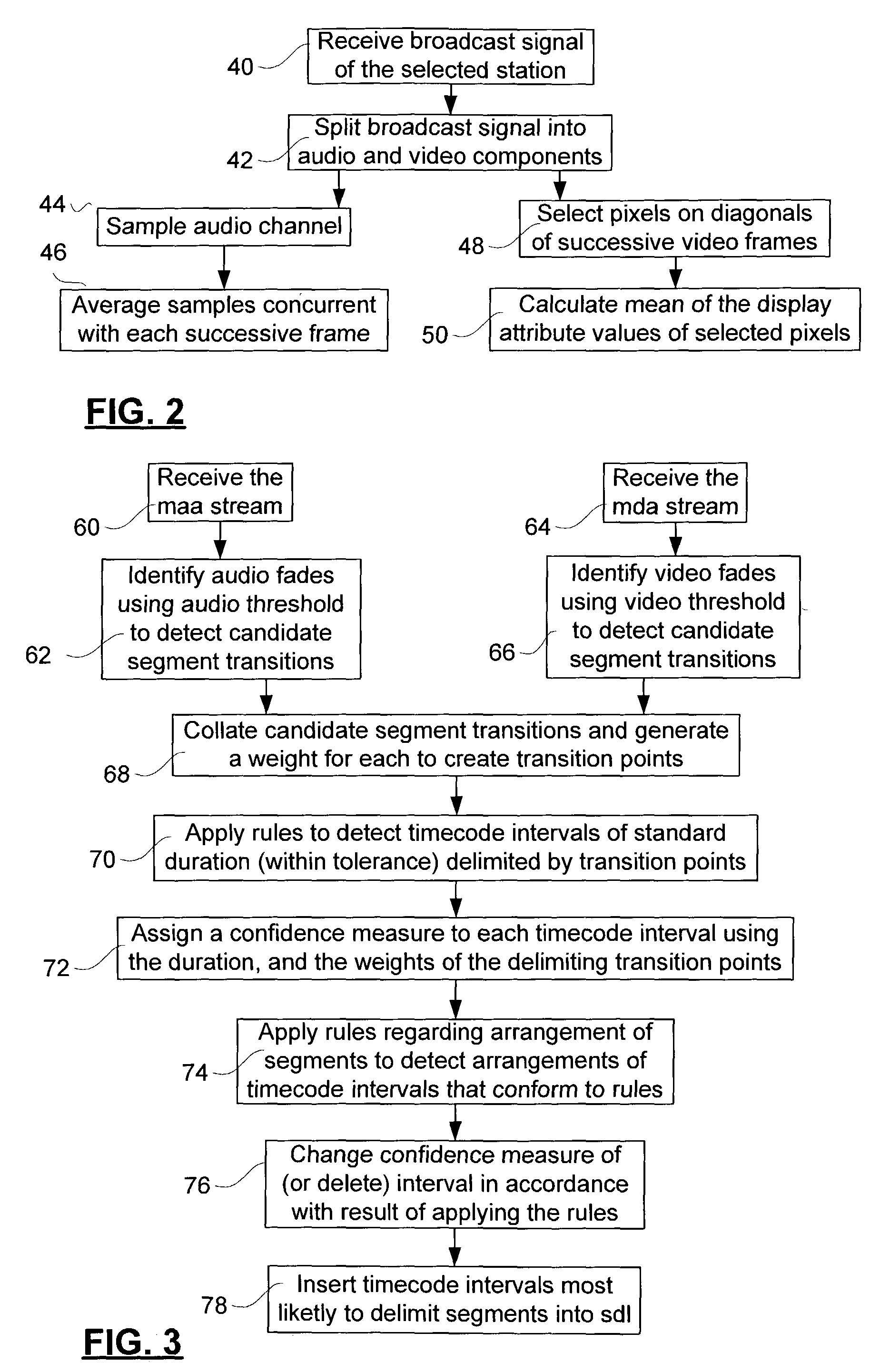Method and system for re-identifying broadcast segments using statistical profiles
a broadcast segment and statistical profile technology, applied in the field of broadcast segment monitoring, can solve the problems of cumbersome matching of signatures, low accuracy, and low efficiency of known procedures
- Summary
- Abstract
- Description
- Claims
- Application Information
AI Technical Summary
Benefits of technology
Problems solved by technology
Method used
Image
Examples
Embodiment Construction
[0043]The present invention provides an efficient method for characterizing segments extracted from broadcast signals. As is well understood in the art a segment of a broadcast signal is a part of a program, an advertisement, or other sequence of frames associated with a program delimited by other segments. A statistical profile is generated by binning mean values of a display attribute of frames in a segment (optionally also binning mean values of mean audio amplitude values). Preferably, the mean values are multiply binned to create a plurality of statistical distributions, from which values of a plurality of statistical properties are computed. The mean values represent corresponding frames of the broadcast signal. Efficiently, the same mean values are used in an improved method for detecting probable segments. The improved method involves applying detection criteria to streams of the mean values to extract candidate segment transitions, having respective transition points. Elaps...
PUM
 Login to View More
Login to View More Abstract
Description
Claims
Application Information
 Login to View More
Login to View More - R&D
- Intellectual Property
- Life Sciences
- Materials
- Tech Scout
- Unparalleled Data Quality
- Higher Quality Content
- 60% Fewer Hallucinations
Browse by: Latest US Patents, China's latest patents, Technical Efficacy Thesaurus, Application Domain, Technology Topic, Popular Technical Reports.
© 2025 PatSnap. All rights reserved.Legal|Privacy policy|Modern Slavery Act Transparency Statement|Sitemap|About US| Contact US: help@patsnap.com



